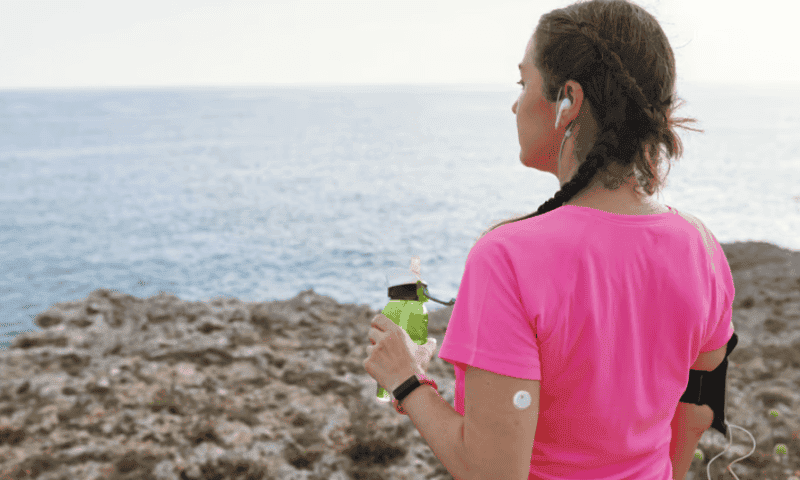Low double-digit growth in quarterly medical device sales has pushed Abbott to nudge up its earnings projections for the year.
The company’s second-quarter report follows FDA green lights earlier this year for its first over-the-counter continuous glucose monitoring systems, the Lingo and Libre Rio, as well as an approval for its Esprit dissolving stent aimed at blocked arteries below the knee.
Abbott posted nearly $10.38 billion in total revenue—for a gain of 4.0% over the same three months the year before, or 7.4% when excluding the effects of international currency exchanges and the first-year impacts of its 2023 acquisition of Cardiovascular Systems.
Under medical devices, sales reached $4.73 billion for 12.1% adjusted growth, driven by double-digit increases both within the U.S. and internationally. That includes a 20.4% bump in diabetes care, with the company’s FreeStyle Libre CGM bringing in $1.65 billion.
The FreeStyle Libre requires a prescription in the U.S. for people with Type 1, Type 2 or gestational diabetes, but the system can be purchased over-the-counter overseas.
Abbott has said that the stateside additions of the Libre Rio and the Lingo will make it easier for people in the U.S. to try out a CGM for the first time—with the Libre Rio designed for adults with Type 2 diabetes that are not taking insulin, and the Lingo aimed at a growing health and wellness market.
“While over-the-counter availability is a new option in the U.S., we’ve been selling over-the-counter in international markets since Libre launched 10 years ago,” Abbott CEO Robert Ford said on a call with investors. “Given our clear leadership position in these markets, we have demonstrated our ability to tailor solutions, approach and communication to the various types of users who compose the CGM customer base.”
That communication, as far as advertising goes, could include multiple avenues, Ford said. “I don’t think, given our experience, that you can just go blast TV advertising and get this big uptake—you’re going to have to do some on-the-ground guerrilla marketing, let’s call it that, together with TV advertising to really open up the market and then sustain it.”
Ford also said he expects users in the over-the-counter market to not wear their new glucose sensors 24-7-365, but maybe only a couple of times a year to start.
“So that’s how we’re thinking about it, and that’s why we have a separate team completely removed from the Libre and diabetes team that are focusing on how to execute this strategy,” he said. “There’s a really big opportunity here. And if we do it right, it’s an opportunity that will be more than a flash in the frying fan.”
At the same time, Abbott’s sales in electrophysiology rose 16.7%, to $627 million, while structural heart devices grew 15.6% to $564 million—which the company attributed in part to this year’s European Union approval of its Aveir dual-chamber leadless pacemaker and the FDA’s go-ahead for its TriClip tricuspid valve implant, plus about 45% in gains alone for its stroke risk-reducing Amplatzer Amulet left-atrial appendage occluder.
In diagnostics, declining COVID-19 testing sales still loom over the results. Coronavirus tests brought in $263 million worldwide in last year’s second quarter, compared to $102 million in Q2 2024.
When excluding those numbers, the division’s earnings swing from a decline of 5.3% to an increase of 5.9%, with a push from dropping foreign exchange rates as well. Total sales neared $2.20 billion, helped along by a 10.0% boost in point-of-care testing sales.
Meanwhile in nutrition, Abbott is facing a lawsuit over its Similac lines of formula designed for feeding preterm infants in neonatal intensive care units, with claims that they led to a gastrointestinal disease known as necrotizing enterocolitis. That case is being heard in court this month, according to a report from Reuters. In the second quarter, nutrition totaled $2.15 billion in sales, up 7.5%, while preterm NICU products alone account for about $9 million annually.
The trajectory of medical device sales follows the path seen in Abbott’s earnings report earlier this year, where double-digit gains pushed the first-quarter haul to just below $10 billion. And as it did then, the company raised its financial forecasts for the remainder of the year.
Abbott pegged its adjusted earnings-per-share range to $4.61 to $4.71, tightening it up from $4.55 to $4.70. Sales growth, meanwhile, was forecast between 9.5% and 10%, raising the midpoint from previous estimates of 8.5% to 10%.

